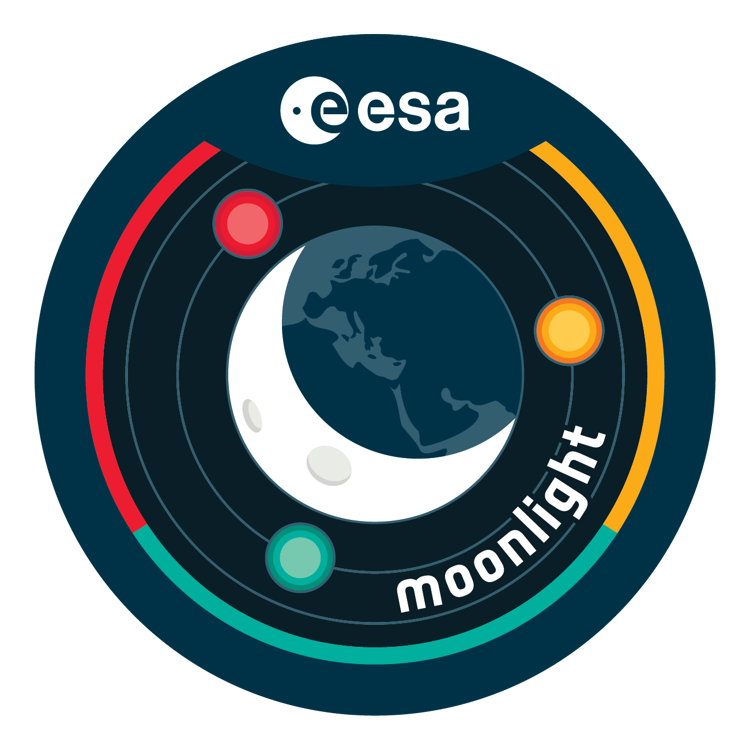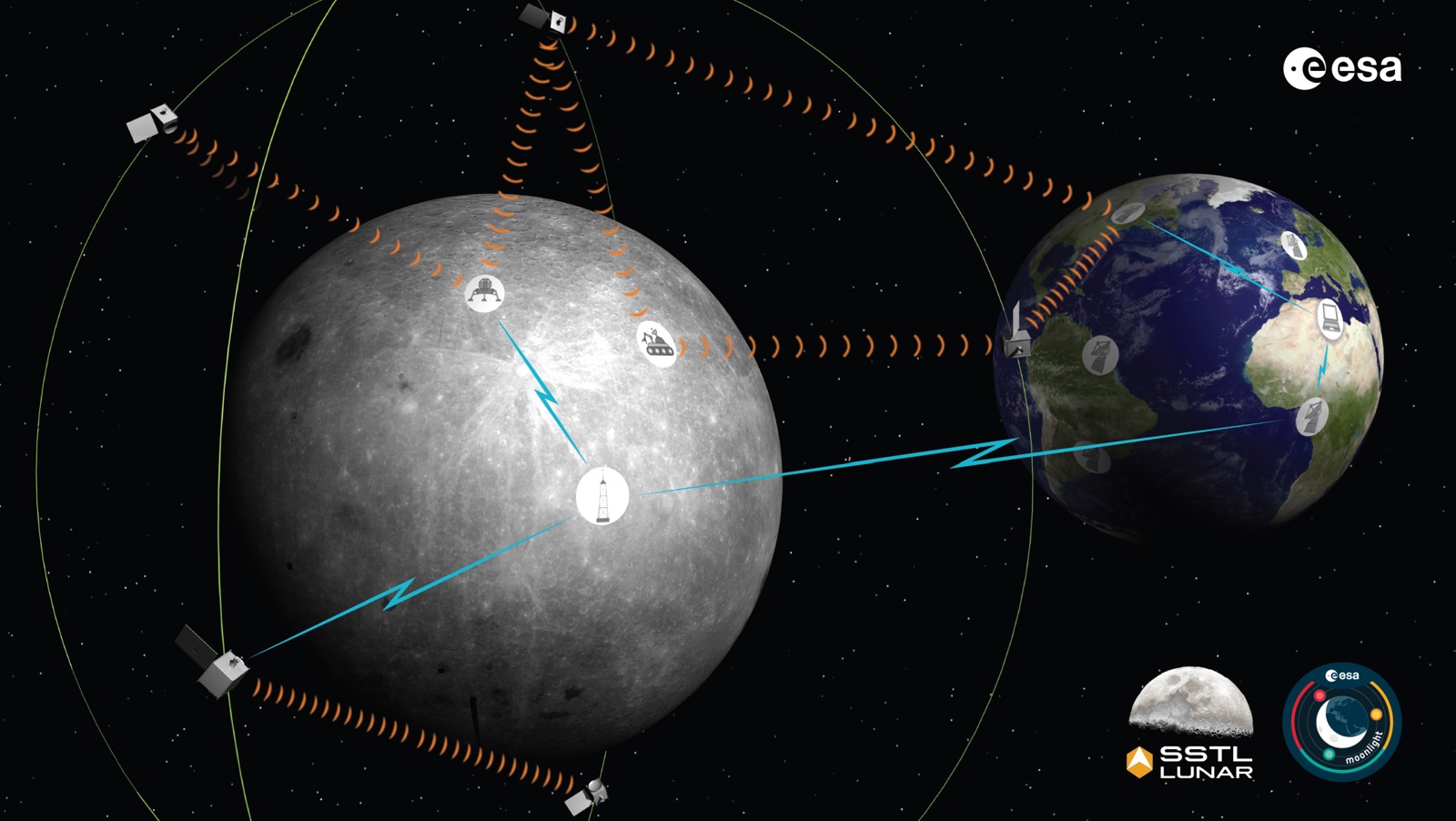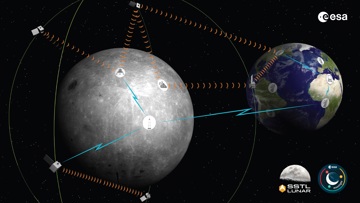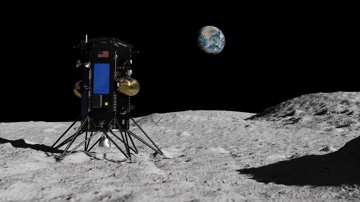The Moonlight Phase A/B1 Study will define the service infrastructure and clearly lay out the development path for a constellation of Lunar communication and navigation satellites. The Study will characterise the complete end to end system, including the Lunar Space Segment, the Moon Surface Segment, the Lunar User Segment and the Earth Ground Segment.
A constellation of interconnected Lunar orbiters will enable surface missions operating on the far side of the Moon, without direct to Earth line of sight, to keep constant contact with Earth. It will also provide Lunar navigation signals to support critical mission phases such as precision landing of scientific equipment and the operation of rovers. ESA is going to the Moon together with its international partners including NASA and there are also many other international, institutional and commercial teams planning one-off missions or a permanent lunar presence.

Acting as a catalyst for Lunar exploration, a shared communications and navigation service infrastructure would reduce the ticket price of Lunar exploration and also reduce the design complexity of individual missions, potentially making them lighter and freeing up space for additional payloads.
Elodie Viau, ESA’s Director of Telecommunications and Integrated Applications, said:
“A lasting link with the Moon enables sustainable space exploration for all our international partners, including commercial space companies. By using an ESA-backed telecommunications and navigation service for the Moon, explorers will be able to navigate smoothly and to relay to Earth all the knowledge gained from these lunar missions.
“A robust, reliable and efficient telecommunications and navigation system will make the dozens of individual missions planned for the Moon more cost-efficient and enable smaller countries to become space-faring nations, inspiring the next generation of scientists and engineers.”
SSTL Lunar will lead the consortium of experienced European space companies which will bring wide ranging skills and capability to all aspects of the study. On the telecom and service operations side, the consortium is expected to include SES’s subsidiary SES Techcom and Airbus who will bring extensive connectivity service and operations experience, while capitalizing on SSTL Lunar’s offering of Lunar Communication services with Lunar Pathfinder.
On the navigation side, GMV-NSL, UK subsidiary of the GMV group, will, in collaboration with SSTL, look after the end-to-end navigation system. The telecommunication payload will be under the responsibility of telecom satellites manufacturer Airbus, while the overall system work for both communication and navigation aspects will be handled by SSTL Lunar. KSAT will be looking at Earth Ground Segment solutions, in collaboration with UK Goonhilly Earth Station.
SSTL’s Managing Director Phil Brownnett said:
“Selection for the Moonlight Study is another step forward for our SSTL Lunar team and, together with our consortium partners, we will be bringing a wealth of both innovation and experience to our technical solution. Leading the consortium builds on our successful collaboration with ESA for our Lunar Pathfinder communications spacecraft which will provide the World’s first commercial Lunar data relay service after launch in 2024”


